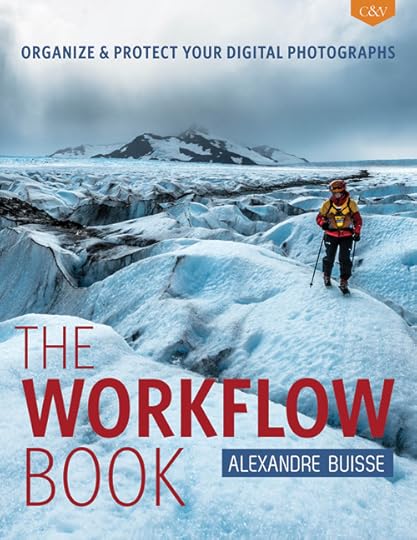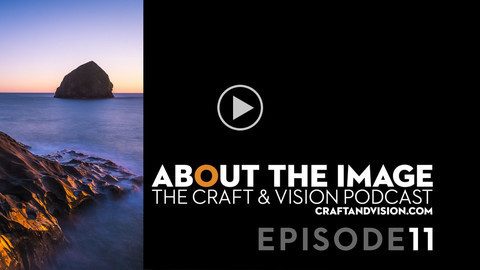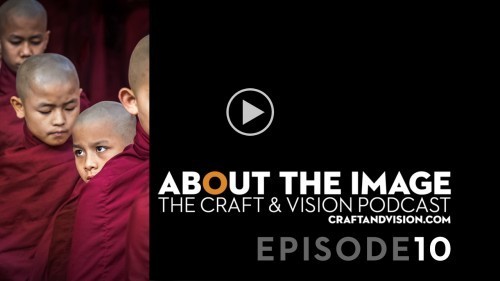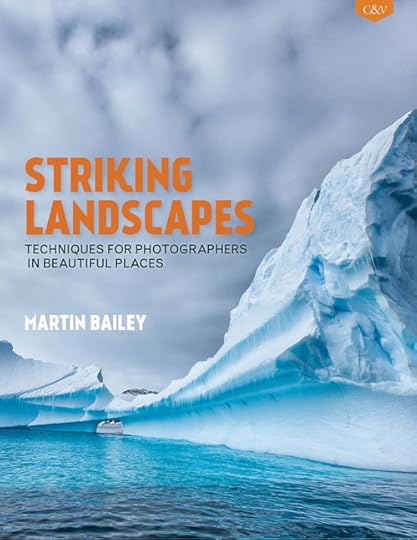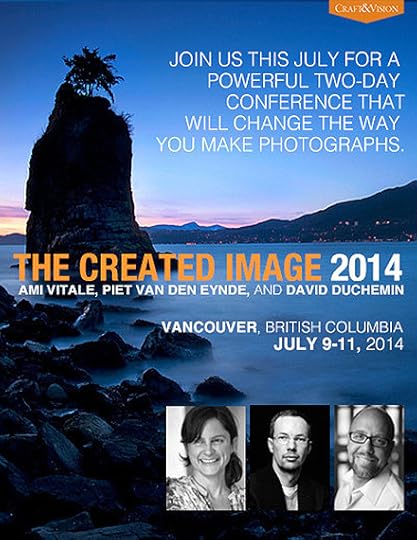David duChemin's Blog, page 28
March 31, 2014
The Workflow Book
Our image files are our art; and if your work is as personal and important to you as it is to me, they’re among our most valuable assets. Understanding how to find them reliably, edit them down quickly, and store them safely, isn’t a luxury, it’s a key part of our craft.
Alexandre Buisse is an outdoor adventure photographer; he spends his time photographing climbers, skiers, and adventure races. He goes – literally – to great heights to get the images he creates for his client and personal work, so he’s appropriately careful with his image files. The Workflow Book will teach you how to ingest, organize, edit, and protect your photographs, and because it’s written by someone who’d rather be out in the mountains making more photographs than sitting in front of his laptop, it’s pragmatic and straight forward.
Buy The Workflow Book before 11:59pm (PST) on April 07, 2014, and you’ll save 20%. Only $5.6o when you use discount code: WFLOW20
*While The Workflow Book discusses Adobe Lightroom and Photo Mechanic specifically, it was written to teach principles of workflow that apply to whatever software you prefer.
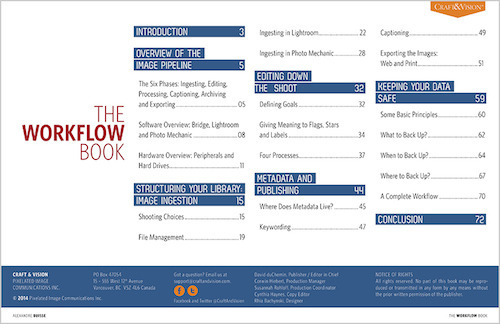
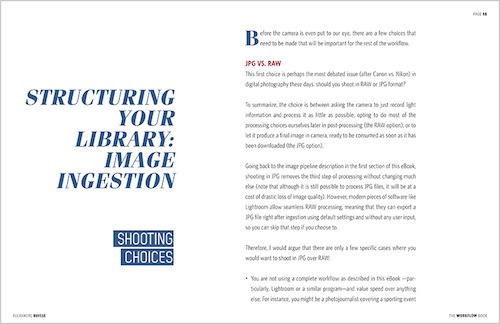
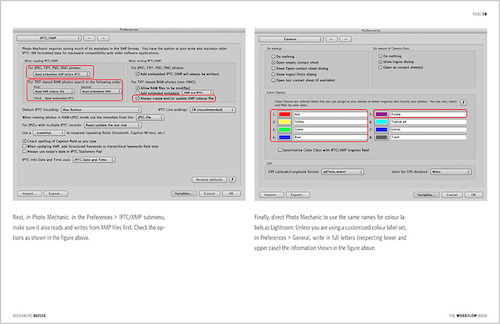
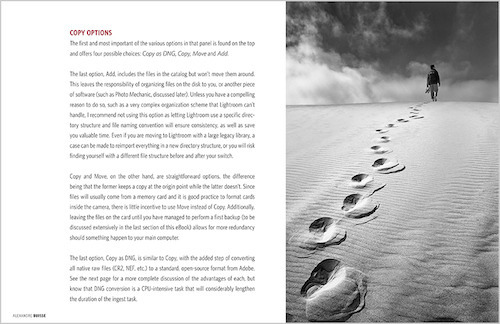
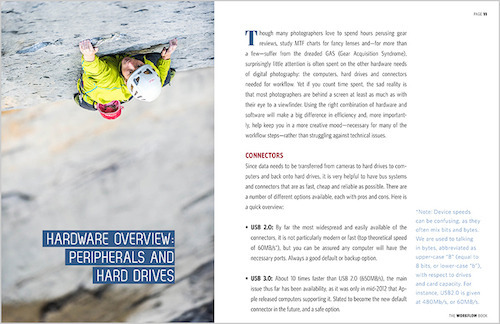
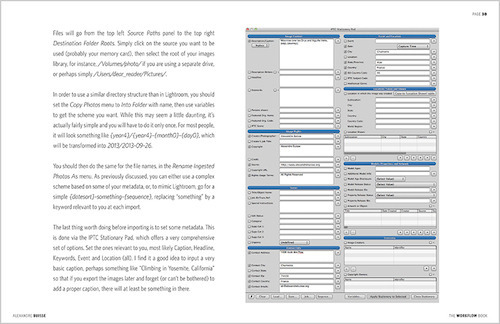
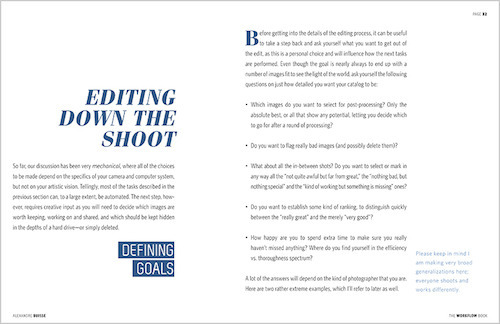
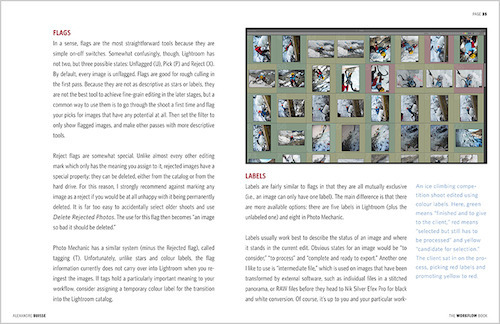
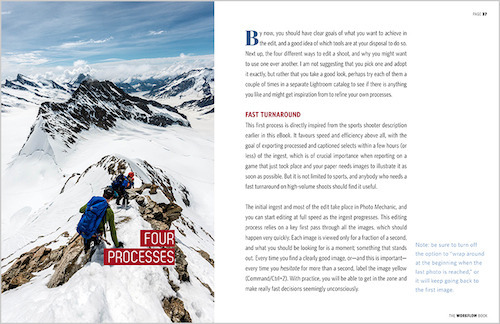
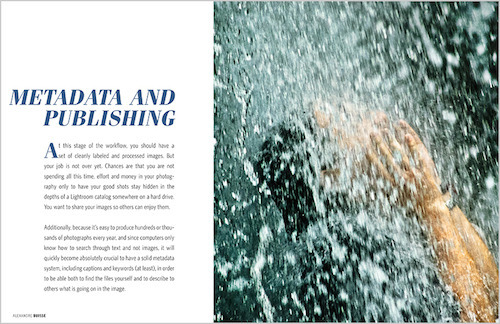

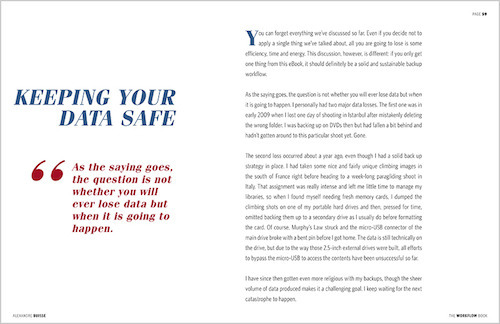
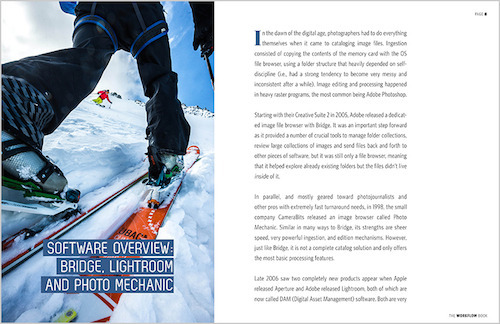
March 28, 2014
Exploration & Expression
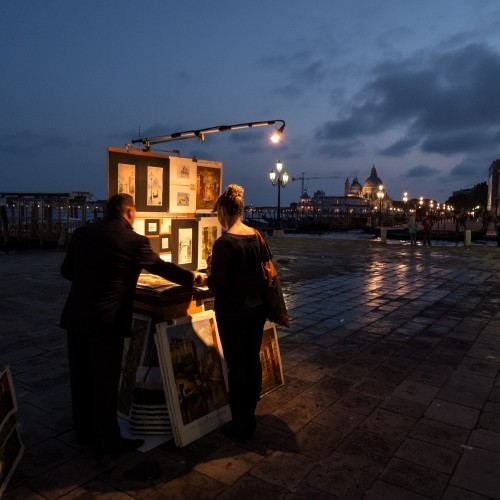
It’s been a while since I wrote about vision. Lately I’ve replaced the word with intent or intention. Almost every time I wrote about vision someone told me how frustrated they were about the whole vision thing. Inevitably it ended – or started – in tears. I can’t remember a workshop that didn’t include someone in tears over this. Sometimes it was me. I like the way Seth Godin put it, that it’s not art if we’re not prepared to cry or dance about it. I’ve done both. Sometimes at the same time.
Have you been there? For a moment pretend that we’re sitting down together over a cup of coffee and you were telling me that you’re frustrated by a lack of vision; or maybe that you have vision but it’s fuzzy around the edges. You know you need vision to become a better photographer, and you’re starting to wonder if you should just give up.
Don’t give up.
Drink your coffee. Take a breath. This is art. It’s not life and death, at least not literally. No one’s going to die if you take a while to figure this out. Patience, my friend.
Our vision is a reflection of who we are, and since who we are is always growing and changing, our vision is a little bit of a moving target. No wonder there’s some frustration. Let it out. Then go find your camera, go out in the rain, and make some frustrated photographs. You might not like them but they might be the most honest images you’ve made in a while, now that you’re free to feel the way you feel.
Our vision almost always outpaces our craft, which is to say that our vision – when we finally do get enough of a glimpse of it – will always be one step ahead of our ability to express it. Depressing, right? Not at all. It means we’ve got a lifetime of exploring ahead of us.
Art, whatever else it also is, is about questions. It’s about exploration. Yes, we use our tools to express our vision, when we’re clear enough to recognize it, but we also use them to explore our vision. We move forward in a cycle of exploration and expression. Sometimes we fail completely to get it right, but the failures have always been better teachers to me than my success. We move forward. Try again. The photographs may not be what we wanted, but if we’re listening, they’ll teach us something – and that’s progress. New questions and a few honest photographs that, for whatever reason, don’t quite work for us, are better than perfect photographs that are responses to questions we’ve long ago stopped asking ourselves, on matters we no longer care about enough to feel this deeply.
What if your photographs are not the point? I know, they matter. They’re important to you. They are to me too. Like Godin, I’m ready to dance or cry about my work. But what if the photographs are the byproduct? What if they aren’t only the expression of our vision but also the means by which we explore that vision? And by “what if..,” I mean it is. Dorothea Lange said it beautifully: the camera is an instrument that teaches people how to see without a camera.
We all have vision. We see the world in a particular way. It’s an extraordinary pressure to feel that we could express that vision in a series of photographs, never mind just one. So despite all the many words I’ve written about vision, in which I still believe, I now wonder if it’s not sometimes a little like one of those things that’s easier to see in the periphery; you see it better when you don’t look straight at it.
It’s been a little while since I wrote an article that seemed to be about photography. But when you believe that photography is about life, almost any subject touches it, and becomes relevant. For me, photography is not the point of any of this. Life is. Photography is the means by which I explore life, and find my vision. Sometimes, though not as often as I’d like, it is a means by which I express that vision, but the longer I do this the more important the exploration is, the more excited I get about new questions.
It’s good you’re frustrated. Too few people have something burning inside them that matters this much. But be gentle with yourself. Treat the artist with patience. Learn your craft, play with the camera, and take it out into your life and let it show you how the world looks through your eyes. Don’t worry about what anyone else is doing. Live a big story, full of honest emotion. Photograph that.
Vision and intent, despite what I’ve written before, aren’t quite the same. You already have vision. Intent is what it takes to put the camera to your eye and try, and to keep trying. Sometimes it’ll come out better than you imagined and will express that vision beautifully. Other times it’ll fall heart-breakingly short and instead of the window to the world that you wanted it to be, it becomes a mirror. Sometimes you work on the art, and sometimes you work on the artist. Either is a victory. Both lead to better work and a larger life. Both take time.
March 27, 2014
Chains All The Same
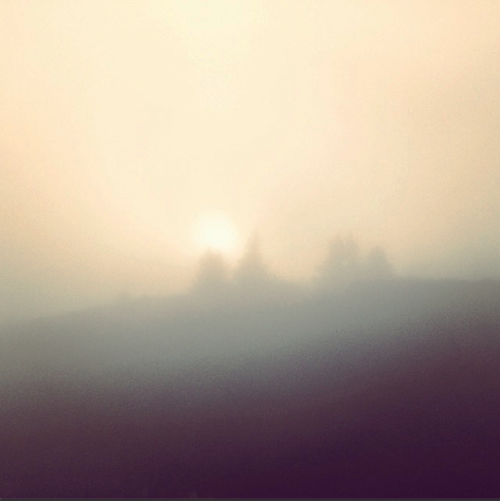
I’m finally hitting Publish on this post. It’s long. It’s not about photography. And it’s none of my business. But it is yours and as I’ve been talking about freedom a lot, I feel strongly that there’s at least one person out there that will read this and avoid making the same mistakes I did, and find freedom from some of this stuff much sooner.
We don’t talk much about money. It’s not polite, which is too bad because if we talked a little more about it we might worry less about it, and we might all have a little more wisdom on the subject. Our culture has multiple personalities when it comes to money. We want it. We trade our days for it. We buy goods that tell others how much of it we have. But we don’t talk about it. About 4 years ago I started talking about it, because as a confirmed financial moron, I had nothing to lose and much to gain. Getting my finances in order has allowed me to live the intentional life I keep talking about. In fact it started with getting intentional about my money. But this post isn’t really about money. It’s about freedom. Freedom to do amazing things with our lives. Generous, adventurous, creative things. It’s just that I need to talk about money because, depending on what we do with it, it’s either a path or an obstacle to that freedom.
I don’t think the secret of a good life is in financial riches. But I do think the good life will be better lived (more easily lived?) when it is lived free of the bondage of debt and the fear and the worry that results.
“Though chains be of gold, they are chains all the same.” ~ Bruce Cockburn.
Money is not the root of all evil. Money allows us to do things like feed kids, put a roof over our head, give to the causes we believe in, fund projects we long to be a part of, and travel to astonishing corners of this beautiful planet. True, money can be a terrible trap. So can poverty and debt. For all this, no one wants to talk about it, and those that do always seem to find a way to seem sleazy about it. It might help if we were less ashamed about wanting more of it, which would make us less ashamed about learning to use it a little better, and working a little harder to keep it.
I keep hearing that most North Americans – as an average – are only 2 pay-cheques away from financial ruin. Something tells me this is bad. Our debt load is astronomical. The 2014 numbers, for credit debt only, and only taking into account households that have credit debt, tell us the average credit debt (USA) is $15,000 per household. The average student loan debt in the United States is $33,000. I’m in Canada and our numbers are also staggering. Apparently there are more self-storage facilities in North America than there are McDonald’s restaurants. We keep buying stuff we don’t need, purchasing against our future, in hopes it’ll get better. It usually doesn’t. And still we have too much stuff.
You may have heard this from me before, but several years ago I completely ran our of options and went bankrupt. One of the many forms I signed said: Reason for bankruptcy: _____________. I wrote “Optimism.” We all think it’s going to get better, though we don’t often make the tough choices that would cause things to get better.
For all the words in this article, there are no magic bullets. They don’t exist, despite what all the Get Rich Fast schemes out there promise. If you want to manage your money, the short, painful secret that no one wants to hear is this: change. When people say they wish they could master their finances they usually mean they wish they had more money (don’t we all?), not that they’re willing to change their behaviour. Change is the hard part. Here are 5 things that I should have done much, much sooner.
Scale Down.
This is the easiest. And the hardest. Not everyone needs two cars. Not everyone needs the latest iPhone, the latest big screen tv, the latest Nikon DWhatever or Canon WhateverDMkII. We don’t need it but oh do we want it! The problem, on a culture-wide basis (aside from how much money we make), is our appetite. GK Chesterton once said there are two ways to get what you want: the first is to acquire more and more, the second is to desire less and less. If you don’t need it, don’t buy it. If you bought it and don’t need it, sell it. Clear it out and don’t fill the space with something new. Tame the appetite. Learn to say no to yourself – or rather, learn to say yes to a bigger thing: a debt-free, clutter-free life that affords you the freedom to do what you want to do.
Our landfills are groaning from the waste. We don’t need it. Your kids don’t need it either. They’ll survive not being the cool kid. I did. Might be that not being the cool kid made me the person I am today. A simpler life, with less consumption, is more sustainable on many levels, including your finances.
More stuff, shiny stuff: it all comes with a promise, and it’s usually false. It never makes us cooler, but it leaves us with that impression for a while. It never lasts as long as we wish it did. And most troubling, someone’s always got something newer, ergo, something better, and we don’t. And it’s never anything we need.
What we need is freedom to live without the debt over our heads. We need freedom to pursue the opportunities that come to us in the present that we’re unable to take because at some point in the past we leveraged our future to buy something we so badly thought we needed. It’s a choice. I pay for nothing unless I have the cash for it. It means sometimes I have to wait. But the longer I do this, the more money I save, the less painful this is. It’s always harder at first. It’s going to hurt. But it’ll hurt more later if you don’t control your spending. If it’s too late, suck it up and go see a credit counselor. The sooner you take this seriously, the easier it’ll be. You won’t believe how fast a $10,000 debt becomes $80,000. It’ll make your head spin. You also won’t believe how freeing it is to live without owing a penny to anyone.
Scaling down applies to homes as well. I’m not going to go into it, but not all real estate is the investment it’s said to be, and there are many, many, good reasons to chose to rent instead of mortgaging a home. Cash flow is one of them. I’ve many a friend that laughed at me for throwing money away on rent who couldn’t themselves afford to do anything because they were so tied up in the mortgage they could barely afford, and several of those who sold the house years later for a return that didn’t come close to displacing what I gained from renting by paying no property taxes, no interest, and no maintenance. For some it’s a great idea, but question the prevailing logic because it might not be right for you. Don’t let pressure to own force you into buying – like all our stuff, a house can own you as easily as you can own the house.
Along these lines, my own policy is to buy the right thing the first time. Want a great pair of boots? Buy great boots the first time. I’d rather spend $200 every 5 years than $80 once a year for 5 years. Buying quality (not on credit) has always paid off for me. It’s false economy to be penny wise and pound foolish, as they say. Second thought – unless it makes you money, it’s a liability. Tech (iPhone, Macbook Pro…) is a terrible place to put your money, and without a debt the worst thing you can use credit dollars to buy. If it’s a business, a lease might be a good idea, but that’s a different conversation. I’m not saying don’t buy them, just to understand you’re buying something with a best-before date and the more years you can use it before buying yet another one, the better.
Save.
When I was young I was taught to put 10% of my money aside. I didn’t. What did I know about money? We didn’t have much of it, but I didn’t know that. It seemed to be there when I needed it. I had no idea how hard it was for my single mother to earn it. I wish I’d been more grateful. I wish I’d started saving. It’s human nature, when things are going well to assume they will always go well. Once you’re free of debt you can put into the bank all that staggering pile of money you were paying in interest. The best time for me to start saving was when I was 10 years old. You now know I didn’t do that. The second best time is now.
Once my bankruptcy was over I started put 10% aside into a savings account. I didn’t miss it. My trustee (court-appointed blessing that she was) told me to do this. In light of my financial incompetence, it seemed like a good idea to listen to her. Combined with tighter spending and no debt, that money in savings made me feel better about myself than any of the stupid things on which I’d spent my money over the previous decade. Slowly I opened more bank accounts, into each I put a specific percentage. Now I have money saved for the tax man, for my travel, and other adventures and contingencies. I do this every pay-cheque and I pay myself first – which means those 10% chunks go into the bank before anything else happens (unless I’ve put something on the credit card to get air miles or purchase protection, that always gets paid first, no questions). Fill those buckets first, then whatever is left over is your means. And it might not be big just yet. But you know what, you’re debt free. You have money in the bank. And no, you may not have the newest Nikon. You have something much better – you have the freedom to use your camera – go somewhere! – and when it breaks or finally dies, you won’t have 2 years of payments left to make on it. Money saved is the same as money earned.
If you’re going to put money in the bank, shop around. Know what interest you’re earning, and how much you have to pay in service charges to earn it. Could be you spend more in a year with that savings account than you earn. That’s not saving. Know your country’s opportunities for tax breaks and leverage your RRSP, 401K, TFSA, or whatever the equivalent of tax free savings or registered retirement finds. One year I saved $11,000 that I would otherwise have paid in taxes, but moving it from a savings account to a retirement fund. One had tax breaks, the other didn’t. $11K is a lot of money and in the right investment it can double in 5-7 years. Keep reading.
Invest.
Do something with that money. I think it was the book Rich Dad, Poor Dad, in which I read this idea: the poor work for their money, the rich let their money work for them. It’s overly-simplistic, I know that, and I bristle at the distinction. But there’s something to learn in it. When you don’t service a mountain of debt, and when you’ve got some money saved, there’s money to invest. Where you do that is up to you. I won’t invest in the stock market, it feels too much like gambling, and mutual funds, etc., scare me. A friend of mine told me he will only invest in what he understands. For me that’s small investments in private equity that routinely yield 10-12%. I won’t explain it because that’s not my place. But 10%, compounded over the next 20-30 years is a great return without being too risky. If you could put $10,000 into something like this, you could double your money every 5-7 years. In 30 years, without doing a thing, you could have $160,000 from that initial $10k. That’s the possibility. But it’s going to take some work to find those opportunities and sift through all the empty promises.
Investing where you’ll see great returns is not just about making more money. It’s about giving your money away, in the places you want to make a difference. It’s about being able to create something – including a bank account - larger than yourself.
Learn.
Don’t just follow the crowd. Study this stuff the way you do your photography. Be intentional about it. Read books like Rich Dad, Poor Dad, or The Richest Man in Babylon. Look up I Will Teach You to be Rich by Ramit Sethi, it’s an awful title that makes me feel like I need to go take a shower, but it contains some solid wisdom and should really be called, I Can Teach You Not to be a Moron with Your Money. And if you know almost nothing about money, any of those three books is a good start. Some ideas will work for you, some will not, but you’ll learn. And investing where you’ll see great returns is not just about making more money. It’s about giving your money away, in the places you want to make a difference. It’s about being able to create something – including a bank account - larger than yourself.
Diversify.
Diversifying your investments is smart, but so is diversifying the way you earn that money. Find a way to earn multiple income streams. Pull your water from different streams, so to speak, and you’ll be less vulnerable when one stream dries up. And if you make one of those streams a passive income stream, even better. You can only be in one place, earning one dollar at a time for your presence. A book that earns royalties earns when you’re off doing something else, perhaps the day job you’re looking to one day leave: that’s passive income and the opportunity for this kind of thing has never been better. Spend some time looking around and you’ll see a staggering variety of things people have leveraged into new streams of income – both active and passive. eBay, Etsy, Shopify, and eJunkie all allow you to sell from almost anywhere in the world. And there are the same amount and quality of services that allow you to to broadcast or teach online, too. You can literally carry a store, a TV station, and a radio station, in your bag, and run it anywhere you’ve got a laptop or tablet and an internet connection. I’ve serviced customer issues from Antarctica. You can do this. If you haven’t read them, I’ll recommend them again: Crush It! by Gary Vaynerchuk, and The 4-Hour Workweek by Timothy Ferris. These books gave me notebooks full of ideas. The eMyth Revisited, by Michael E. Gerber is another good one if you’re looking to become an entrepreneur.
None of this is easy. Definitely isn’t magic. Changing our lives can be hard. Our own habits are hard to break and we live in a culture that passively, if not actively, encourages our debt and consumption. It keeps the big wheels well lubricated. But eventually your own wheels will seize up. Don’t let it happen. Your freedom is on the line. Your one chance at an extraordinary life may not be completely hijacked by your debt or money struggle, but mine was getting strangled. It took re-educating myself, changing patterns I didn’t want to change but could no longer afford. Read some books, talk to someone who knows how to use money well (not a guy who runs a mutual fund gig selling what his boss tells him to sell) – money is a tool and the sooner we learn about how to use it, the sooner we can build something amazing with it. Don’t give up.
Not an easy subject. Even harder to admit when things have been off the rails and ask for help. It’s deeply personal, I get that. It’s one of the reasons I’m finally publishing this article, which I’ve written and re-written a hundred times over the last year. I’m open to this post being a total bust but if it gives just one of you some new resolve or a fresh idea on approaching this, then it’ll be worth it. Your finances are none of my business, and my answers might not be yours, but the comments are open if you want to bounce some ideas around, tell your story, refer us to a good resource…
March 24, 2014
About the Image, Episode 11.
The latest episode of About the Image just went live – this time it’s a 12-minute discussion about cropping and aspect ratios, among other things, using a seascape submitted by Josh Riggs. You can find the video podcast, free, here on the Craft & Vision website – or you can subscribe via the RSS feed from Vimeo – via this link.
I hope you find something in these bi-weekly videos that strengthens your work and gives you new ideas. Enjoy!
March 18, 2014
About The Image Podcast: New Episode
Episode 10 of my Craft & Vision podcast, About The Image, is now up. Thanks to Soren Neergard for this episode’s photograph.
A free video podcast, About the Image is a chance for me to discuss the photographic language, and issues related to visual design and composition. They go from about 7 minutes to, well, longer, and there are now ten episodes to catch up with while you wait for the next one. See you there!
There’s information on each video about how you can submit your own work to be included in these bi-weekly discussions.
To watch About The Image, visit Craft & Vision’s website. This link will take you straight to the Podcast page. You can also subscribe to the podcast through Vimeo.
March 16, 2014
Three Things About Time
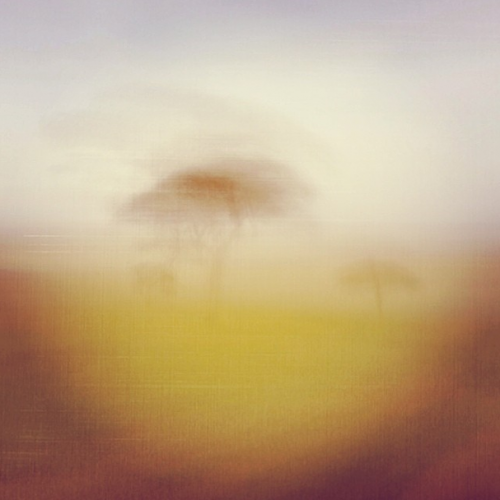
He told me I was one of the most productive people he knows. Somewhere in the same breath he used the word “lucky,” as though my “luck” was the only reason I get so much done. I think he meant it as a compliment. With all the talk lately about the brevity of life and the importance of really living it, it’s inevitable we talk about time. I might even find the courage to open a conversation about money too, because as much as we squirm when the topics come up, or as much as we like to hope it’ll all just work out in the end, these are two tools – fundamental tools – that none of us will ever use well unless we master them. Master them? We barely talk about them.
Here are three things I know about time.
Time is not found. It is made. You put the big rocks in first. If you don’t put the big rocks in first, the pebbles and the sand – the small inevitable stuff that might seem so urgent but isn’t ultimately important – will fill your life leaving no room (again!) for the big project, the trip to Africa, the book you wanted to write this year. “I just never found the time!” Of course you didn’t, because you never made it. Get a calendar and put red lines through whole weeks or months. WRITE BOOK. For me I take 2-3 hours every week day (parents, do it for an hour after the kids are asleep) when that time is blocked off. I do my work. I take less coffee meetings, schedule in less appointments and I get the work done. One word at a time. Day after day. I am not prolific because I am lucky (though sometimes I think I might be lucky because I’ve been prolific). I just do the work. You can too. It’s not easy, but it’s also not a competition. You might only get one book a year written, not two or three. Big deal. You might also have other things going on, like a family. But you can have a family and write a book. Unless you’re waiting to find the time. Then you should give up now. At least you’ll feel less perpetually guilty. You don’t find time. You make it.
Time doesn’t stand still. We do. Have you ever spent a couple minutes on Facebook only to discover, an hour later, that time just flew by? Do that once a day and you’ve allowed seven hours of your life to dissolve into your past. Everything you could have created in that time, remains uncreated. Every real conversation with your kids, your family, your lover, just didn’t happen. We might do it later. We might not. I’m not saying give up Facebook, I’m saying the small moments matter and they are cumulative, and it’s easy to let the most precious thing in our life: our moments, pass up by while we “kill time” with a little Facebook time. Be intentional about it. Set time limits if this is an issue for you. It’s not being engaged with social media, or TV, or gossip magazines, or whatever, I’m talking about. I’m talking about what you’re missing. You could be practicing your French. You could be hand-writing a card to your Mother. You could be scheming next years adventure. Serving a client. Be intentional about your time. Own it. Don’t let little blocks of it dissolve your whole day away. You have a day’s worth of moments today, but you can only do one thing with each of those moments. Make that an intentional choice.
Time is now. You know how some people say, “there’s no time like the present?” Rubbish. There’s no time except the present. This moment is all we have. If you want to write a book, start now. If you need to reply to an awkward email, do it now. If you don’t plan to reply, delete it and delete it now, not later. The less times you handle things, the less time you waste on that thing. Check your email three times a day, not 300. We’re so good at finding ways to feel like we’re doing something – anything! – with our time. If that’s what you want, just to feel busy, then carry on. Want to actually create, to make something? Start now. Make it one of your big rocks. Set a few hours aside and shut the browser, turn the phone to Do Not Disturb, and kill the email client. Now. No one likes beginning something. It’s hard. So full of uncertainty. That’s why people like to wait for inspiration. It’s gives us time to sit around doing nothing until inspiration strikes, which it almost never does because the one guaranteed way to make inspiration strike is to get to work, get a couple pages in, make a few photographs, put the paint on the canvas – even when, or if, you have no idea where it’s heading. If you wait until you feel like it, you will never master time, and you will never create what you are capable with the time you have. The “feel good” that comes from creating comes closer to the end of the process than it does to the beginning.
Being creative, or productive – see how suspiciously similar they are at their roots: create, and produce – is not a talent. It is not luck. It is a decision. It’s an act of the will to use our tools well, and use them now.
March 13, 2014
Uinta Adventure Pack
This is the new Uinta Adventure Pack from Gura Gear. I’m a big fan of their bags and have been using them for the last 4 years as my work has transitioned to more landscapes and outdoor adventure work. As that transition has occurred, the things I want in a bag have also changed. My main bags are still the Gura Gear Bataflae, the newer version of my old much-favoured Kiboko, but for smaller trips, like the cross-Canada trip I plan to make in the Jeep this fall, I’ll be taking the Uinta.
Please don’t read this as, or expect this to be, a review. Still on crutches after a recent surgery, it’ll be a while before I’m walking and photographing again, so I haven’t used it yet. But I can’t wait to. This is just a reaction to the bag that’s sitting here beside me, begging to be used. Like everything they make, this bag seems killer-durable and extremely well thought out for the photographer who wants to be a little more active. The harness is excellent – and that’s one of the things I most like about it. Heavy camera gear swaying side to side, throwing me off balance is even less cool now than it used to be.
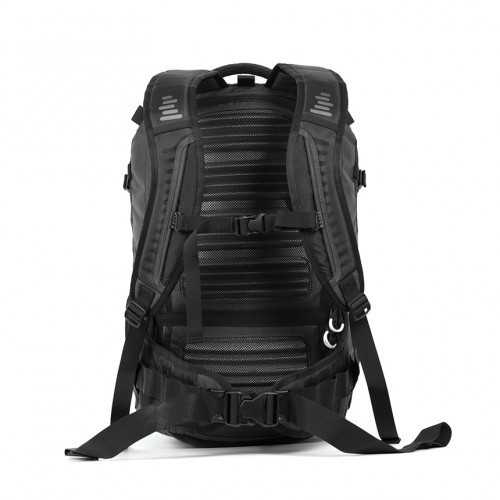
The core of the bag, though you can use it empty, is the modular aspect of it. There are two available modules – a smaller one and a larger one. You can put them both in there, full of gear, of either one alone, leaving room for other things – snacks, sweaters, gorp/trailmix, that kind of thing. Access to the bag is either through the front or through the back and if you use the waist belt, you can pull the pack off your shoulders, swing it to the front and access gear through the back while the hip belt remains attached. It’s nice not to have to put it on the ground just to get at the gear. I like the modularity because I often pack a day-pack when I travel and know I don’t always want the full bulk of a camera bag and now I won’t have to bring both.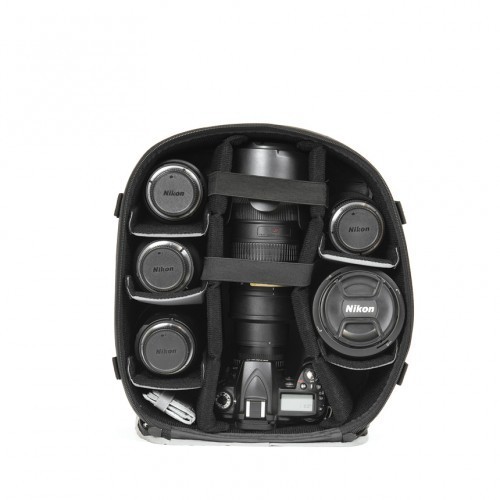
Other features include excellent, and weather-sealed, zippers, plenty of room for little bits and pieces in the front, a laptop sleeve, room for water bottles, and a front-mounted hydration sleeve that will also hold a jacket (top) or tripod (below). I’m betting it’ll also hold my snowshoes. The Uinta is extremely compressible, has a beefy handle up top, and if you’re using some of the smaller mirrorless gear, there’s room for all it, plus filters and assorted bits, and it can maintain a really trim profile. Plenty of room for the big gear, but sometimes you want to carry less and the compressibility is nice.
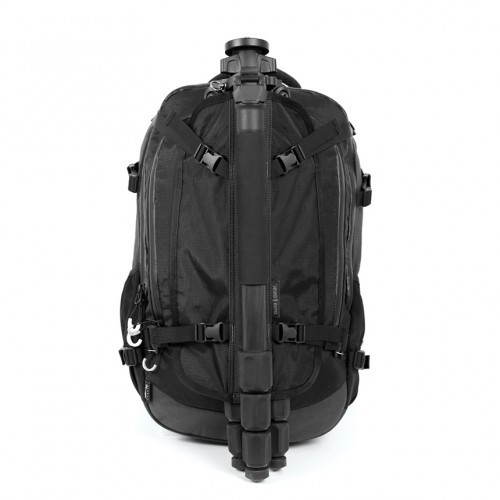
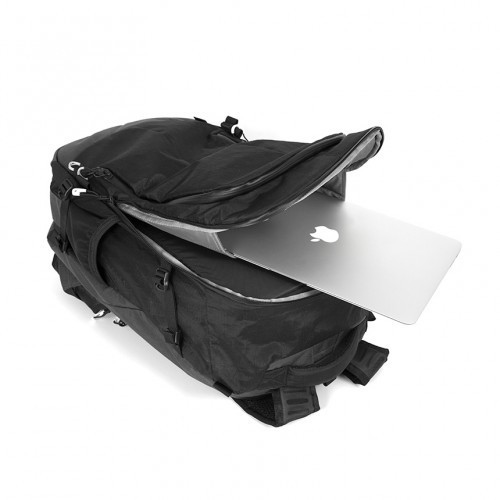
The Uinta isn’t cheap, but then neither is the gear you’re putting into it and you get what you pay for. The basic bag is $199, the modules are $159 if you buy them both together, and the tripod/hydration system is $39.95. But if you order the Uinta and use the code FREETHS, they’ll throw in the THS (Tripod/Hydration System) for free. More information here on Gura Gear’s website.
Photographs courtest Gura Gear.
March 10, 2014
Striking Landscapes
 Today we’re releasing Martin Bailey’s latest eBook – Striking Landscapes, Techniques for Photographers in Beautiful Places. It’s big (80 pages) and beautiful, and like anything Martin does, it digs into some of the nitty gritty stuff – usually the same kind of stuff I go to Martin for help on because as hard as I lean to the artsy fartsy poet-warrior stuff, Martin leans to the technical. He just knows this stuff, and explains it, better than I can. And by stuff I mean things like shooting and stitching panoramas, star trails, and filter systems, along with pages of other helpful stuff. Take a look at the table of contents and the sample spreads here, and head over to Craft & Vision to get in on the launch discount.
Today we’re releasing Martin Bailey’s latest eBook – Striking Landscapes, Techniques for Photographers in Beautiful Places. It’s big (80 pages) and beautiful, and like anything Martin does, it digs into some of the nitty gritty stuff – usually the same kind of stuff I go to Martin for help on because as hard as I lean to the artsy fartsy poet-warrior stuff, Martin leans to the technical. He just knows this stuff, and explains it, better than I can. And by stuff I mean things like shooting and stitching panoramas, star trails, and filter systems, along with pages of other helpful stuff. Take a look at the table of contents and the sample spreads here, and head over to Craft & Vision to get in on the launch discount.
Buy before March 17, 2014 at 11:59 PM (PST) and Striking Landscapes is available for CAD $6.50 (that’s $1.50 off the retail price) if you use following discount code: STRIKING6
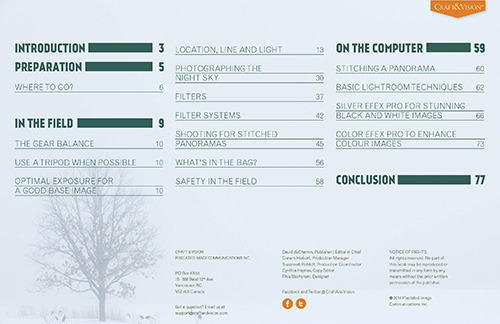
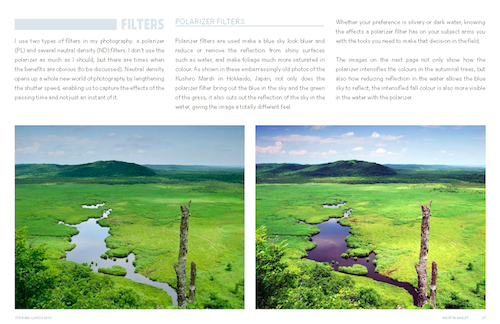
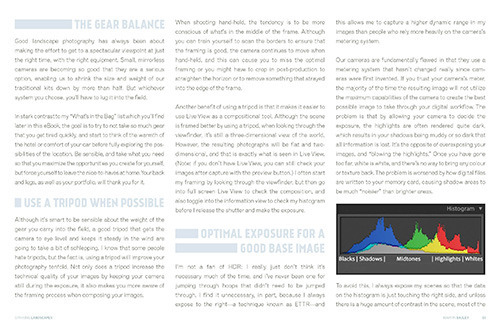
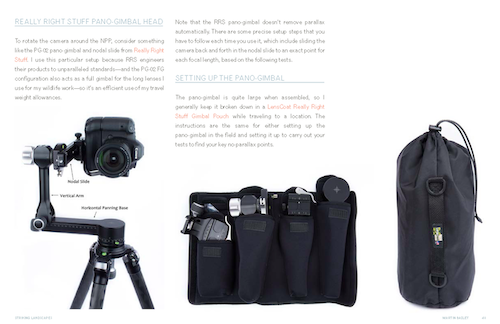
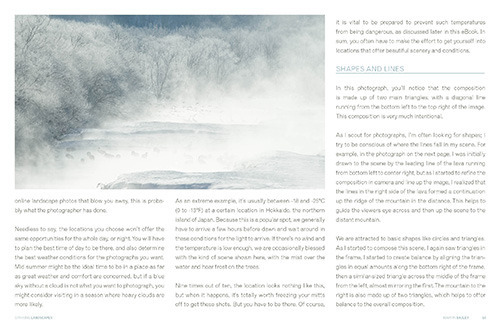
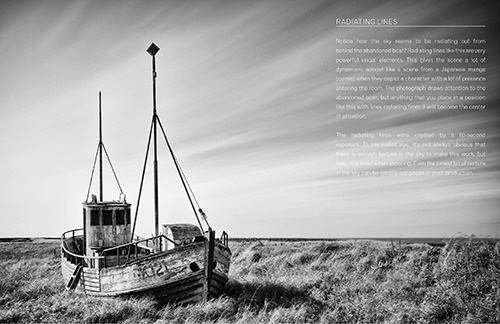
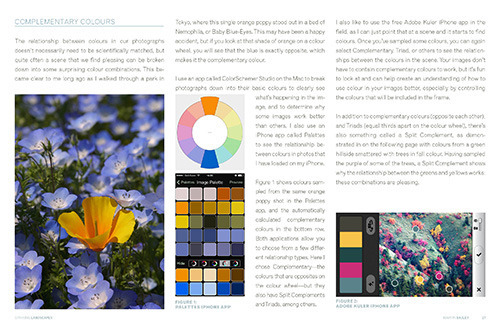
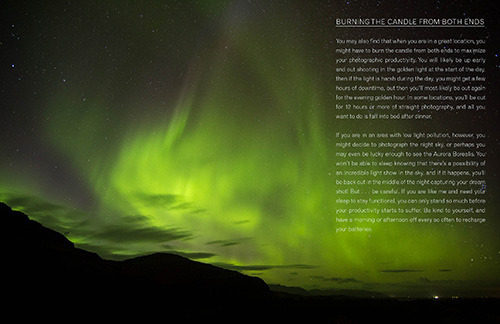
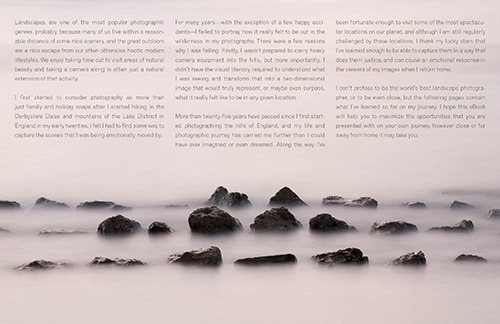
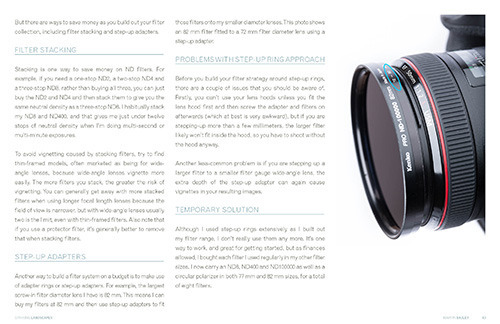
March 9, 2014
The Created Image 2014
The Created Image conference went so well last year, we’re doing it again, and there’s room – after pre-sales to those who asked to be notified first – for about 10 more people.
These two intense days will change the way you make photographs. I’ve invited two close friends: National Geographic photographer and the only human being on the planet to be officially designated my Evil Twin, Ami Vitale will be speaking about the power of photography and visual story-telling and will kick off the conference with a keynote address before we all meet and greet over wine and cheese on Thursday evening, July 09. Piet van Den Eynde is coming from Belgium to lead 4 sessions about post-production, and I’ll be taking the other 4 sessions. Full curriculum descriptions can be found on the event page.
It’s going to be a small, intimate setting, with lots of chances to spend time with Ami, Piet, and I, and Vancouver’s a beautiful city so there’s plenty to explore in the early mornings and evenings with your camera. If you’re not looking to learn how to use the buttons and dials on your camera, but want to work on the stuff that makes us all the photographers we are, this is going to be an amazing couple of days. We’d love to see you here.
If you act before April 15, you can still get in on the Early Bird discount pricing, which will save you $100.
For more information on the Created Image 2014, or to register, visit the event page.
Anticipating the questions, yes, last year we filmed the presentations and we intend to do the same this year, to make at least some of the content available to those who can’t come, but there are no guarantees. Good chance you’ll be able to buy some of the sessions as downloadable content from Craft & Vision, but don’t let that stop you from coming.
March 6, 2014
Make It Human.
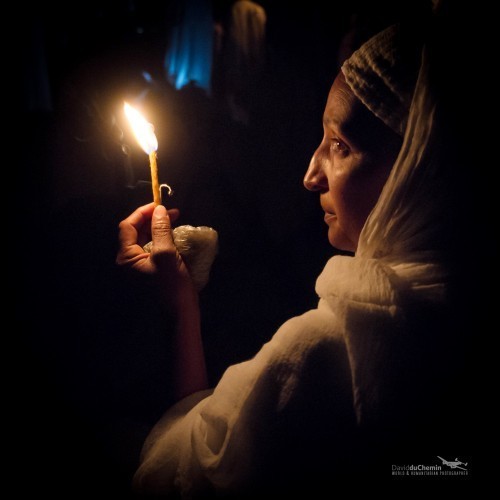
“This might end up in crying. If you’re not prepared to cry about it, I’m not sure you’re making art. And if you’re not prepared to dance in anticipation, you’re definitely not making art.” ~ Seth Godin
I don’t imagine there’s much point, this far down the line, in another rant about how photography has become a technocracy, a place where the artifice means more than the art. But is anyone else feeling that all this technical perfection is leaving too little room for the humanity we long for?
People don’t resonate with perfection, because life isn’t like that. “Perfect” photographs get Liked on Facebook. They get “Great capture, Man.” They do not stir the heart. I’d guess it’s one reason that some of us still love film – the possibility of tactility and imperfection, the reminder present in the grain and the register marks, the odd scratch, of the medium itself and the human being who held the camera. It’s something, for all the good that digital photography makes possible, that we’ve lost.
If you want people to listen to your art – your photographs, your writing, your Twitter stream – make it human. Make me care. Mare me laugh. Make me cry. Show me your soul. Pull up your shirt and show me the scars from your heartbreak. Tell me a story. Show me your art and let it move me. Don’t tell me you got a new lens, that your photograph won an obscure award, or that you just sold a print to some dude in Arizona. When our art becomes a quick piece of “look at me” that cost us nothing – no tears, no fear, no blood – then we’re creating noise, not signal. Little bursts of solipsistic cacophony to which we’re becoming more and more deaf. I think we can do more than say “I was here” with our art. And if that’s the thing you want to say, then do it boldly, go all-in and strip every stitch of clothing off, and stand there naked – in soul if not in body – because if you won’t be vulnerable with your art, we’re not interested. We’ve got too much going on in our own lives. We’ve got noise enough around us without bothering to sift through more unless it’s alive. The only thing that cuts through that noise are the sounds of the human heart.
Vulnerability is painful. More so for those of us who picked up the camera so we’d have something to hide behind. I get that. But if your art is a gift and you want me to listen to it, read it, feel something by looking at it, then you’ve got to embrace vulnerability as part of the pain and the healing of the creative process. There’s so much noise out there. If you want to be heard, you’ve got to touch me. Human to human.
The great challenge of art is not learning to use the tools of our craft, but learning to say something human with them. The second is learning to be OK with the silence until then.
“This is the very perfection of a man, to find out his own imperfections.” ~ St. Augustine

